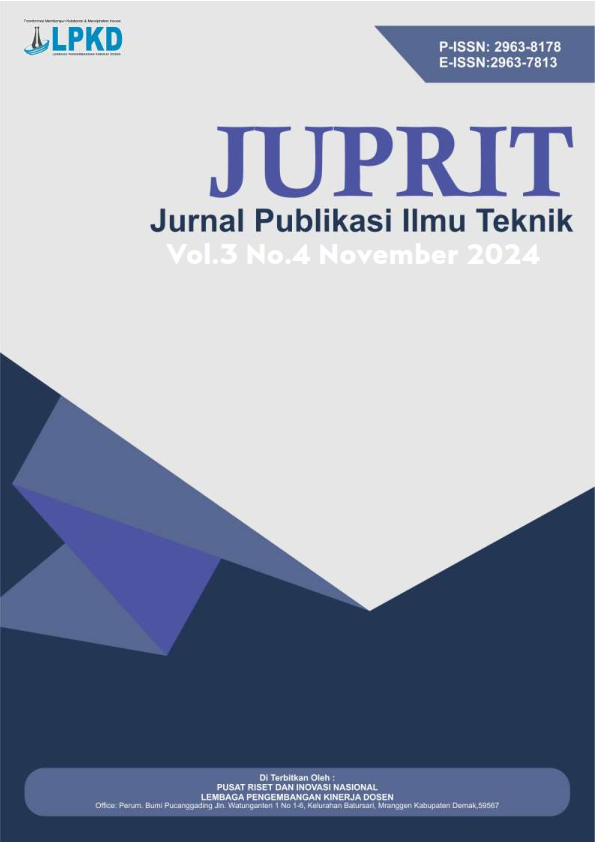Peramalan Permintaan Produk Beras Pandan Wangi Asli dengan Menerapkan Metode Autoregressive Integrated Moving Average (ARIMA) dan Seasonal ARIMA (SARIMA) pada Perusahaan Agriculture Business
DOI:
https://doi.org/10.55606/juprit.v3i4.4374Keywords:
Forecasting, ARIMA, SARIMA, Consumer Demand, RiceAbstract
Agriculture Business Company is a company that runs in the field of agriculture, in the form of rice or paddy. However, the company focuses more on rice. The company is experiencing problems in meeting consumer demand for original pandan wangi rice which still cannot be fulfilled due to limited raw materials. With this problem, forecasting is carried out using the Autoregressive Integrated Moving Average (ARIMA) and Seasonal Autoregressive Integrated Moving Average (SARIMA) methods. The data used is pandan wangi rice demand data for the period January 2021 to December 2023, with Minitab software as a calculation tool. The results of data processing show that the data obtained is not seasonal, therefore only processing is carried out using the ARIMA method. The research results of the best model in forecasting consumer demand for original pandan wangi rice at the Agriculture Business Company is the ARIMA (0, 1, 1) Model with an MSE value of 34.39. The MSE value is the smallest MSE value for the original pandan wangi rice demand forecasting model at the Agriculture Business Company. The advice given to the company is that from the results of the research, the company can later make a reference in shopping for raw materials and evaluate what factors can increase the value of demand.
Downloads
References
Drajat Pangestu, D., Sumartono, B., & Bhirawa, D. W. T. (n.d.). (2021). ANALISIS PERAMALAN PERMINTAAN PRODUK KIPAS ANGIN DENGAN METODE ARIMA (AUTOREGRESSIVE INTEGRATED MOVING AVERAGE) UNTUK MENENTUKAN PERSEDIAAN SAFETY STOCK DAN SERVICE LEVEL PADA PT. CATUR SUKSES INTERNASIONAL.
Dritsaki, C., Niklis, D., & Stamatiou, P. (2021). Oil consumption forecasting using arima models: An empirical study for Greece. International Journal of Energy Economics and Policy, 11(4), 214–224. https://doi.org/10.32479/ijeep.11231
Faisal, S. M., & Khan, A. K. (2021). Overview of the ARIMA Model Average Crude Oil Price Forecast and its Im-plications on the Indian Economy Post-Liberalization. International Journal of Multidisciplinary: Applied Business and Education Research, 2(2), 118–127. https://doi.org/10.11594/ijmaber.02.02.06
Gasper, L. (2023). A SARIMA Model for Forecasting Consumer Price Index in Tanzania. International Journal of Management, Accounting and Economics, 10(8), 2383–2126. https://doi.org/10.5281/zenodo.8420457
Ghosh, S. (n.d.-a). (2020). Forecasting of demand using ARIMA model. https://ajamc.smartsociety.org/
Hermawan, R. (2022). Analisis Peramalan Penjualan Produk Nutrisi Dengan Metode ARIMA dan SARIMA Pada PT Sapto Bumi Hidroponik. In Junal Ilmiah Teknik Industri Prima) (Vol. 5, Issue 2).
Jiang, H., & Leng, X. (2023). RETRACTED: Computer prediction of cotton and sporting goods prices in e-commerce environment based on ARIMA model (International Journal of Electrical Engineering & Education, (2021)). In International Journal of Electrical Engineering and Education (Vol. 60, Issue 1_suppl, pp. 3747–3757). SAGE Publications Inc. https://doi.org/10.1177/0020720920983706
Kien, D. T., Huong, P. D., & Minh, N. D. (2023). Application of Sarima Model in Load Forecasting in Hanoi City. International Journal of Energy Economics and Policy, 13(3), 164–170. https://doi.org/10.32479/ijeep.14121
Novyta, N., Alhazami, L., & Id, L. @mncu A. (2022). PERAMALAN PERMINTAAN PRODUK NATA DE COCO DALAM SUPPLY CHAIN MANAGEMENT DENGAN MODEL ARIMA. 7(2).
Nurfadilah, N. (2021). The ANALISIS PERAMALAN PERMINTAAN PRODUK MINUMAN HERBAL DENGAN METODE ARIMA PADA CV. GENTONG MAS. JAMI: Jurnal Ahli Muda Indonesia, 2(2), 117–123. https://doi.org/10.46510/jami.v2i2.85
Prasert, T., & Rungreunganun, V. (2021). Thai Coconut Price Forecasting Using Arima Model. International Journal of Advanced Research in Engineering and Technology (IJARET), 12(1), 950–961. https://doi.org/10.34218/IJARET.12.1.2020.087
Salah Uddin, K. M., & Tanzim, N. (2021). The Role of Internal Auditors in Achieving the Social Responsibility of the Commercial Banks Operating in Jordan: A Field Study. International Journal of Business and Management, 16(6), 56. https://doi.org/10.5539/ijbm.v16n6p56
Wanjuki, T. M., Wagala, A., & Muriithi, D. K. (2022). Evaluating the Predictive Ability of Seasonal Autoregressive Integrated Moving Average (SARIMA) Models using Food and Beverages Price Index in Kenya. European Journal of Mathematics and Statistics, 3(2), 28–38. https://doi.org/10.24018/ejmath.2022.3.2.100
Wibowo, S. (2023). Penerapan Metode ARIMA dan SARIMA Pada Peralaman Penjualan Telur Ayam Pada PT Agromix Lestari Group. Jurnal Teknologi Dan Manajemen Industri Terapan (JTMIT), 2(1), 33–40.
Тryhuba, А., Koval, N., Тryhuba, I., & Boiarchuk, O. (n.d.). (2022). Application of Sarima Models in Information Systems Forecasting Seasonal Volumes of Food Raw Materials of Procurement on the Territory of Communities.
Downloads
Published
How to Cite
Issue
Section
License
Copyright (c) 2024 Jurnal Penelitian Rumpun Ilmu Teknik

This work is licensed under a Creative Commons Attribution-ShareAlike 4.0 International License.








